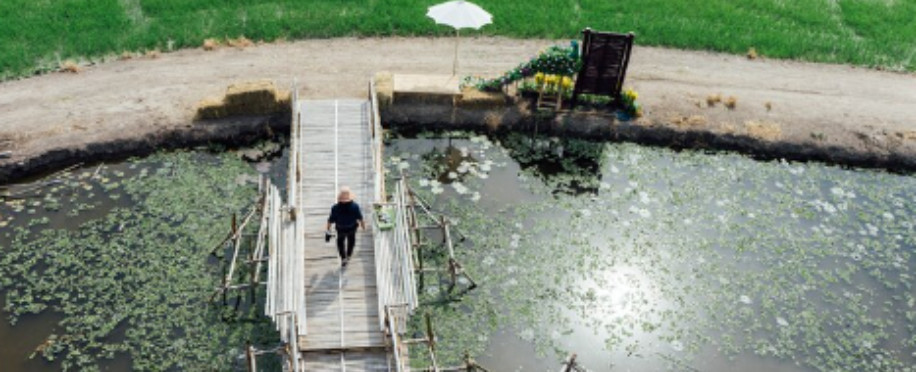Copyright © 2025 lmitac.com All Rights Reserved. Contact - Terms and Conditions - Privacy Policy - Quality Policy - Become an instructor - Vacancies - Sitemap
London Maritime Academy is a trade name for London Premier Groupversion: 2.9.0
London Maritime Academy is a trade name for London Premier Group

Posted on : 3/30/2024, 1:49:06 PM
The aquaculture development aims to provide the current and potential global need for fish production, and seafood, as a reliable source of protein, while guaranteeing the marine environment sustainability.
Additionally, aquaculture production development or fisheries development seeks a high and amazing economic development project for all the national coastal cities. Whether with increased job opportunities, annual projects, or even development in the economic and industry sectors.
Stay with us to learn more about aquaculture production development, its prospective growth, and the outlines of the innovations in the aquaculture industry development.
Aquaculture development term refers to the science of careful and organised cultivation strategy of aquatic organisms, including fish, shellfish, aquatic plants, and algae, under controlled conditions.
Moreover, fisheries and aquaculture development establishes the best conditions in the available budgetary limits, involving all basic activities such as breeding, rearing, nutrition, and harvesting of aquatic species in designed environments.
The main purpose of aquaculture development solutions is to increase fish production to meet human consumption levels. Next to other included goals, like sustainability, and economic viability with the reduction of environmental impacts from the aquaculture industry application.
With various and large government investments in aquaculture production and activity, we are seeing promising future growth indicators in the aquaculture industry.
Especially since the aquaculture development project works to reduce the pressure on wild fish stocks and the high demand for protein-rich seafood. And all of that is done through sustainable ways.
Furthermore, the aquaculture development plan is going through several development projects to develop the fisheries, techniques, farming, and all the included details.
So, we can say that the future of aquaculture production and industry is promising, with all the opportunities for sustainable growth, technological advancement, and increasing contribution to global food security.

As we are seeing great and upgrading innovation in various aspects of the maritime industry, from commercial maritime practices to sustainability efforts, we are also seeing amazing employment of innovations that are shaping the future of aquaculture development.
Sea robots are robots that function within the production fisheries and within oceans and seas to monitor and capture data to enhance framing practices, improve the supply chain, and reduce industry functioning costs.
As this worldwide data-collecting technology is used to study, create, and develop suitable conditions for the fish within the aquaculture and fisheries.
In addition, the sea robots are improving the existing aquaculture program and plan by autonomously monitoring fish health, feeding patterns, and environmental conditions.
The main concept of aquaculture development is providing the best breeding conditions for fish growth based on the available capacity. And farmers could do that professionally through advanced analytics and bulk data programme.
Additionally, according to the Marine Environment Courses UK, this will allow the selection of desirable qualities through genetic analysis, enhancing the farms' productivity and disease resistance based on countries statutory policy.
There are different crucial water parameters, such as temperature, pH, oxygen levels, and pollutants, that directly impact fish growth and aquaculture development actions.
Thus, as part of the developed aquaculture production program, advanced monitoring systems are implemented to continuously monitor, collect data, and send warning signs to the public authorities.
This instant feedback, allows aquaculturists and collaborative agencies to instantly adjust management approaches, and provide the optimal conditions for fish health and growth.
As there are many included operations within the aquaculture production program, there will be for sure some waste. Thus, developing innovative wastewater treatment technologies is vital to minimise pollution from aquaculture operations and promote freshwater.
The main wastewater management method is Biofiltration and Recirculating Aquaculture Systems (RAS) that help remove pollutants from water, reduce the rate of the environmental footprint of fish farming, and conserve water resources for people.
Urban aquaculture involves the expansion of cultivating fish and other aquatic organisms in controlled indoor environments with advanced urban infrastructure and technologies. To ensure efficiency, lessen resource consumption, and ensure the welfare of farmed fish.
On the other hand, AI and IoT technologies support the transformation of land-based aquaculture systems to be as suitable as possible by enabling precise monitoring and control of production parameters. Moreover, it optimises factors such as feeding schedules, water quality, and environmental conditions.
Aquaculture development is the best technique and answer to meet the growing global need for seafood resources. However, to guarantee the best economic outcome for all marine aquaculture and fisheries, the development plan and project must be accurately studied by professional scientists.
Meanwhile, with professional farming work, trained team, and updated techniques aquaculture development could reach its goals without any environmental impact.